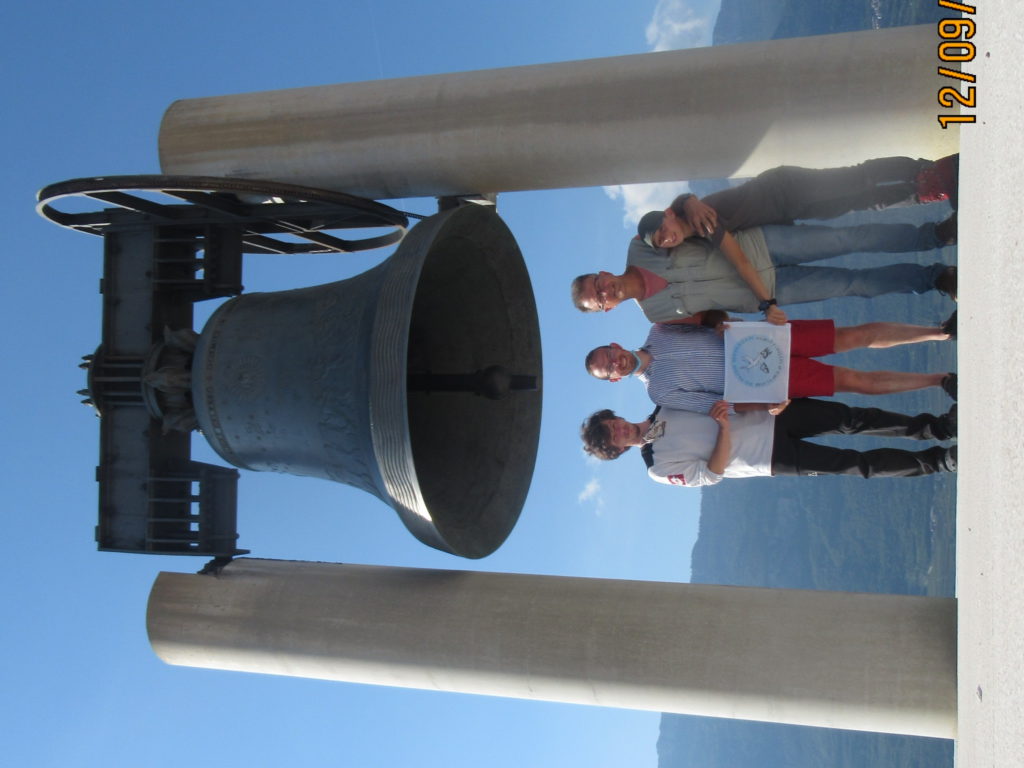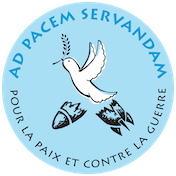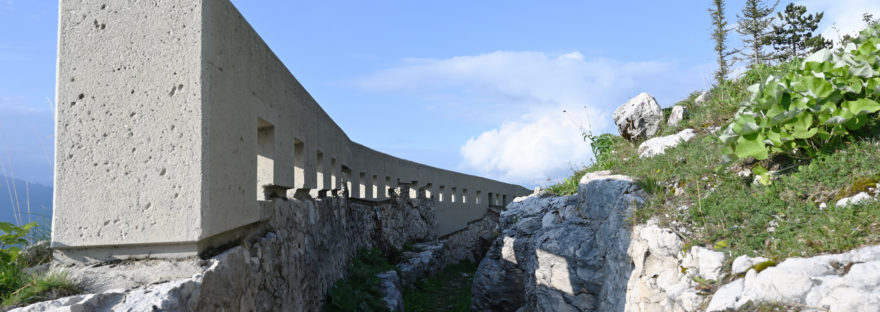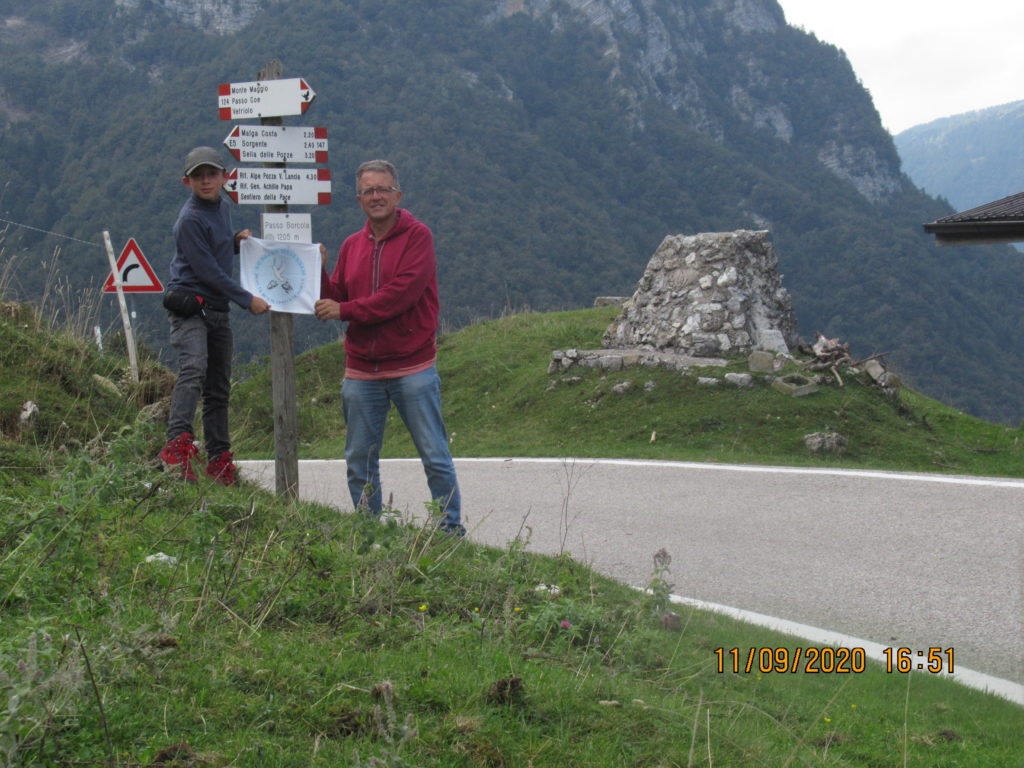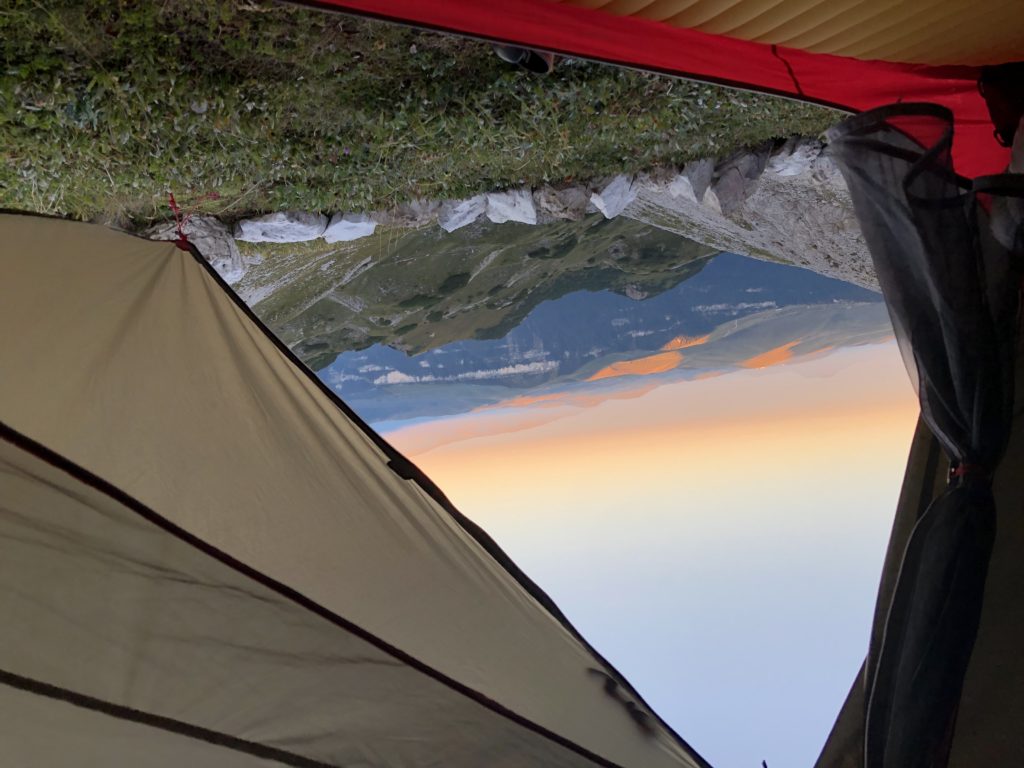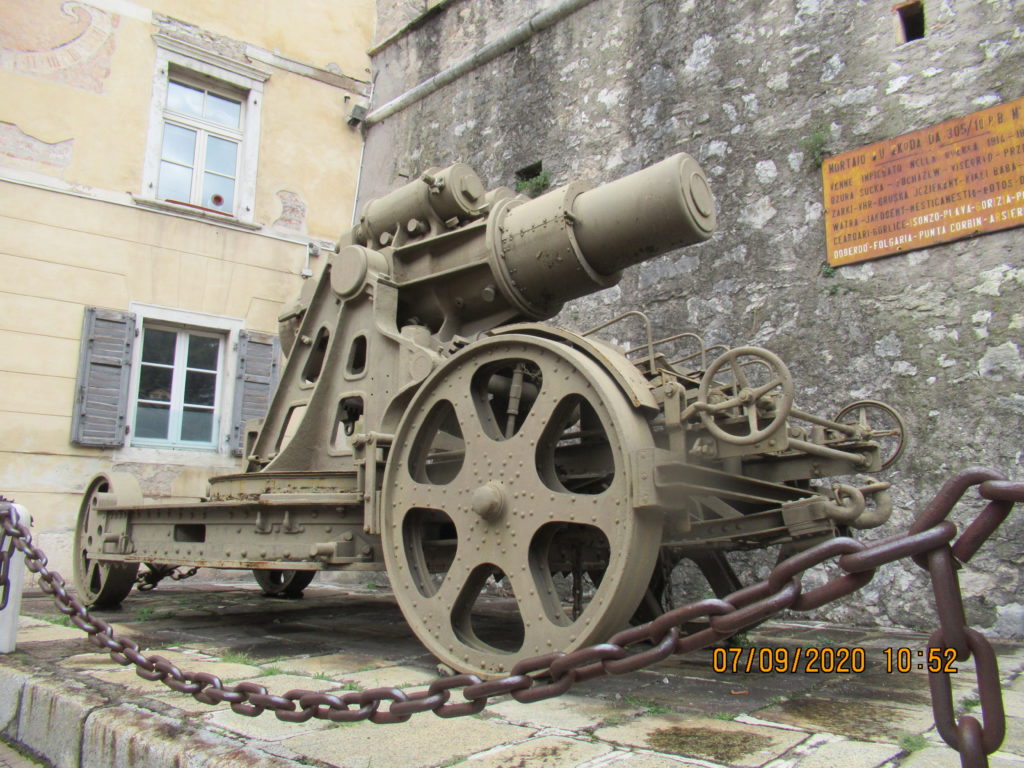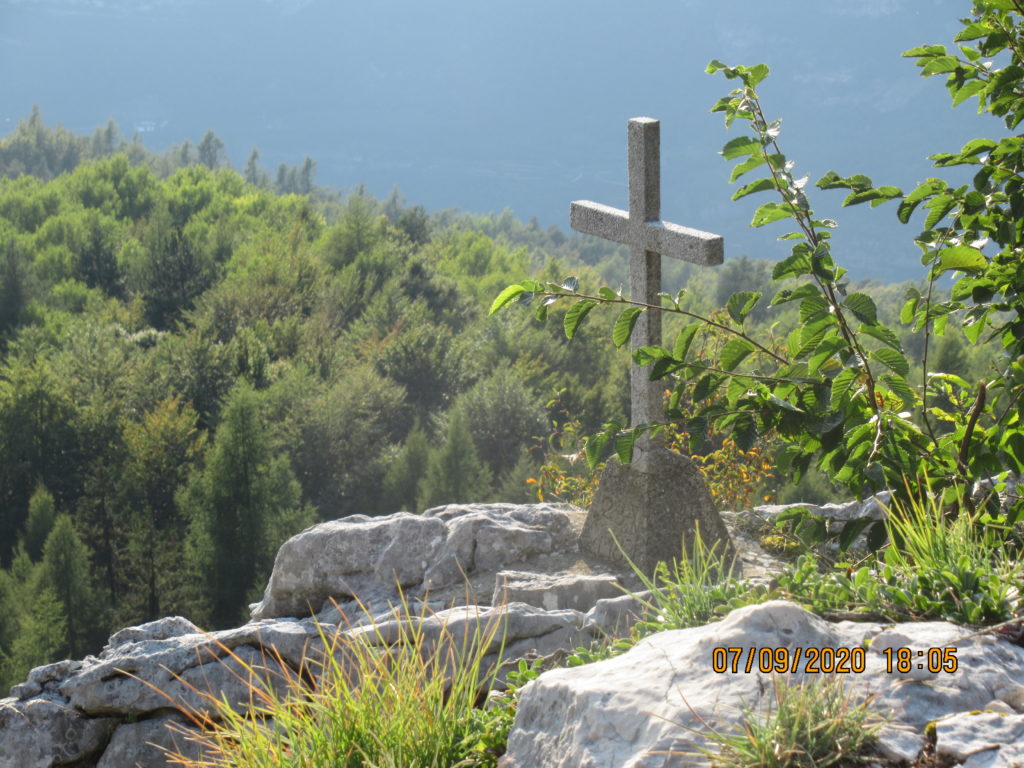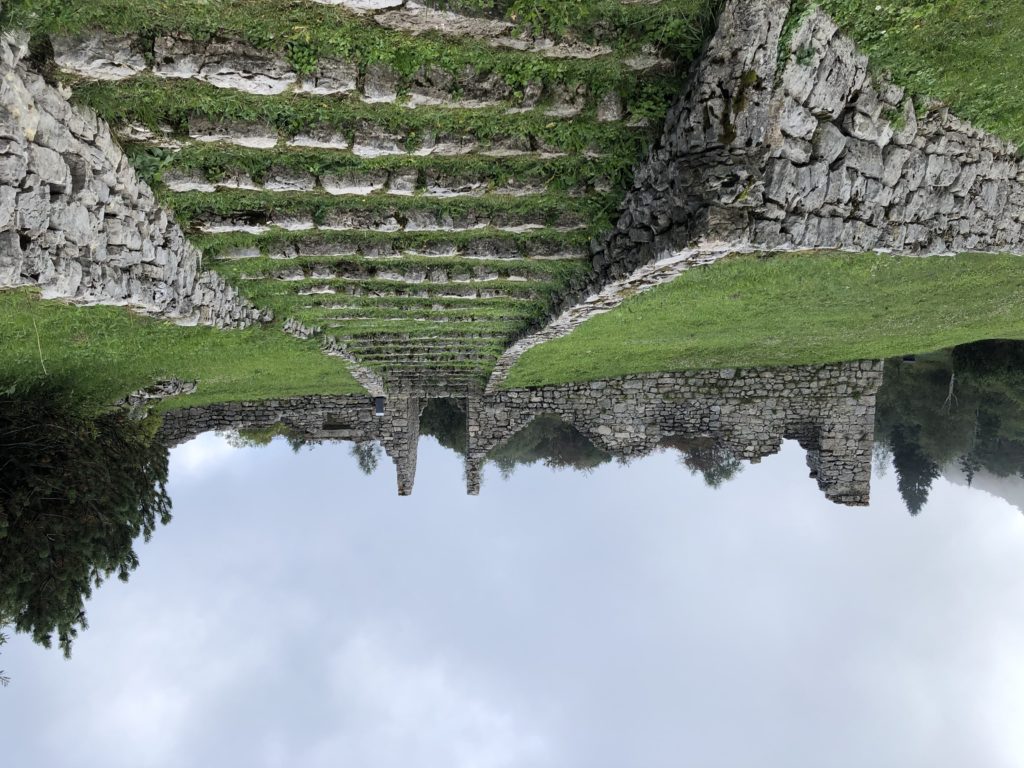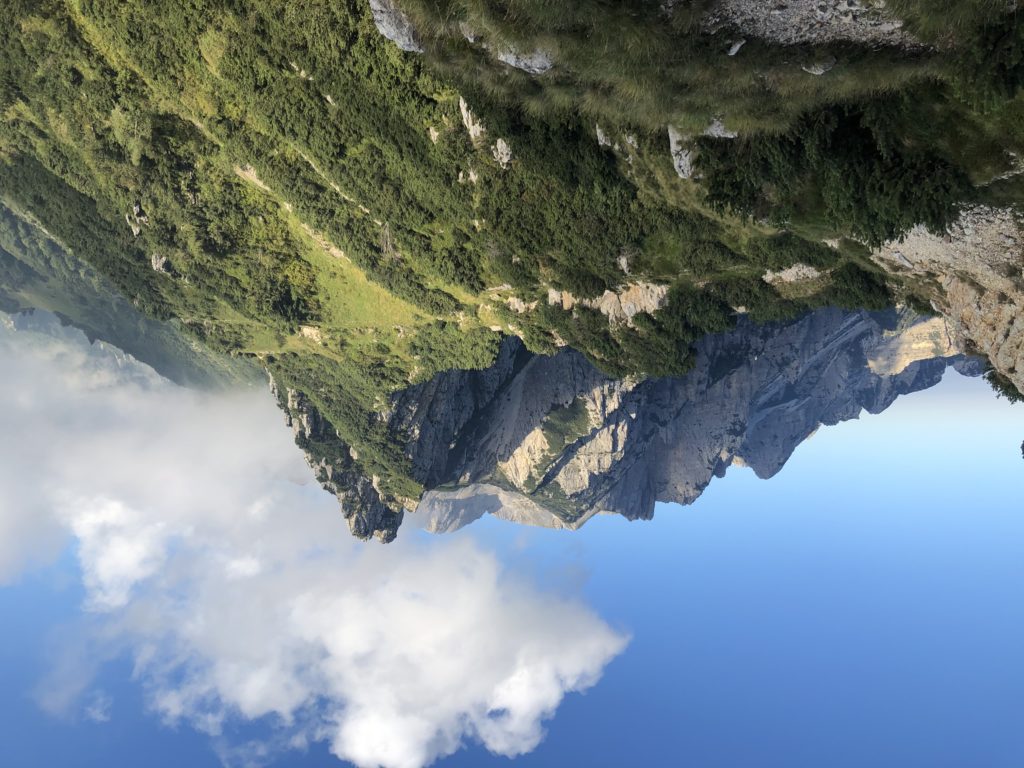For one week, from Monday 7 September to Friday 11 September 2020, some of our members walked a stretch of the 650 km “Sentiero della Pace” (Path of Peace), which runs along the Italian or”Alpine front”of the First World War. It was here that the Italian and Austro-Hungarian armies faced each other between 1915 and 1918. The chosen route is located in the Pre-Alps of Vicenza, near the town of Rovereto and Lake Garda.
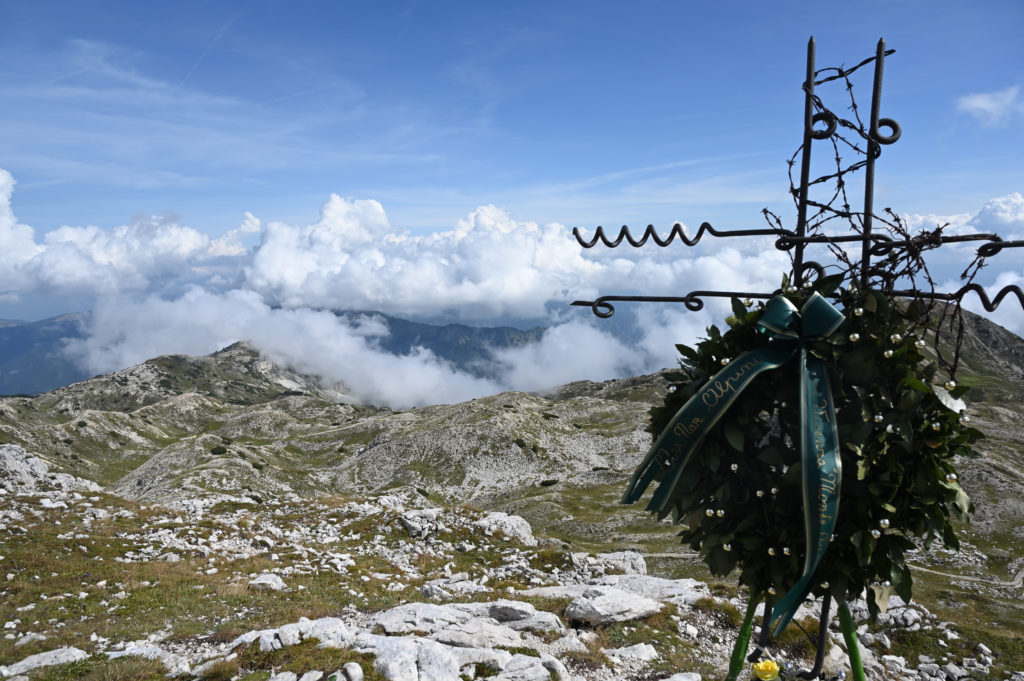
The aim was to discover, in places of the “Great War”, as the Italians call the First World War, the very harsh reality of a mountain war – little known in Europe – although it claimed about one million victims in the military corps of both countries.
The fact that impressed us most is the superhuman efforts demanded and made by the soldiers on both sides to stabilise the front line in a trench warfare at heights where the mountains and the seasonal weather defy all human nature. This trench warfare is therefore also known as the “White War ».
We have captured some of the highlights of the Peace Trail as we have experienced them. The climbs and descents are impressive and some of them are very steep. The signs and didactic boards helped us to understand how close the enemy soldiers were to each other for the fight.
The numerous barbed-wire and ossuaries and the remains of fortifications are the silent witnesses that brought to life in our imagination the reality of the high front, unique in Europe. Almost the entire distance we covered this week was between 1,400 and 2,300 metres above sea level.
After experiencing the fog on the summits, we understood that the winters were the first enemies of the soldiers. Hundreds of soldiers were unable to reach places of refuge and were buried alive in snowstorms.
With our five senses, we grasped the reality of this war, which cannot be conveyed in the same way through books or virtually. Along this path of peace, we quickly realised how war dehumanises soldiers. The dead often only had the right to improvised cemeteries in the mountains.
But at all times the magnificent views from these heights and the peaceful nature of the landscapes contrast with the cruel and inhuman reality of the First World War. Thus the horror and absurdity of the war led us to the front line on Mount Pasubio, where, during an Austrian offensive, 2,800 Italian soldiers died in a single day. This was followed by the explosion of a summit, the “dente italiano”, in which 500 soldiers died.
On the last day we visited the Museo della Grande Guerra in Rovereto, also called “Città della Pace”, which, among other things, presents a good documentation of this conflict. That same evening we witnessed the hundred blows of the 22-ton Campana della Pace, which was installed in this town. In fact, the sound of this bell reminded us from Monday to Saturday at 9.30 p.m. and also on Sunday at noon that peace remains a good to be defended and maintained. On 30 October 1924 the bell was cast from the bronze of the guns donated by the countries that took part in the First World War. The following year, on 24 May 1925, it was “baptised” in the name of “Maria dolens”. She honours the dead of all wars by calling for peaceful coexistence between all countries of the world.
The photos taken along the way will make up a calendar for 2021, which will be available on our website and from the members of our committee from November.
The proceeds of the sale will go to the scholarship of a young Ukrainian student who has left his hometown because it is occupied by pro-Russian separatists who, by russifying and impoverishing the population, prevent him from pursuing a recognised course of study in Ukraine. For this reason, the student will begin his studies at the University of Kharkiv in free Ukraine in September.
